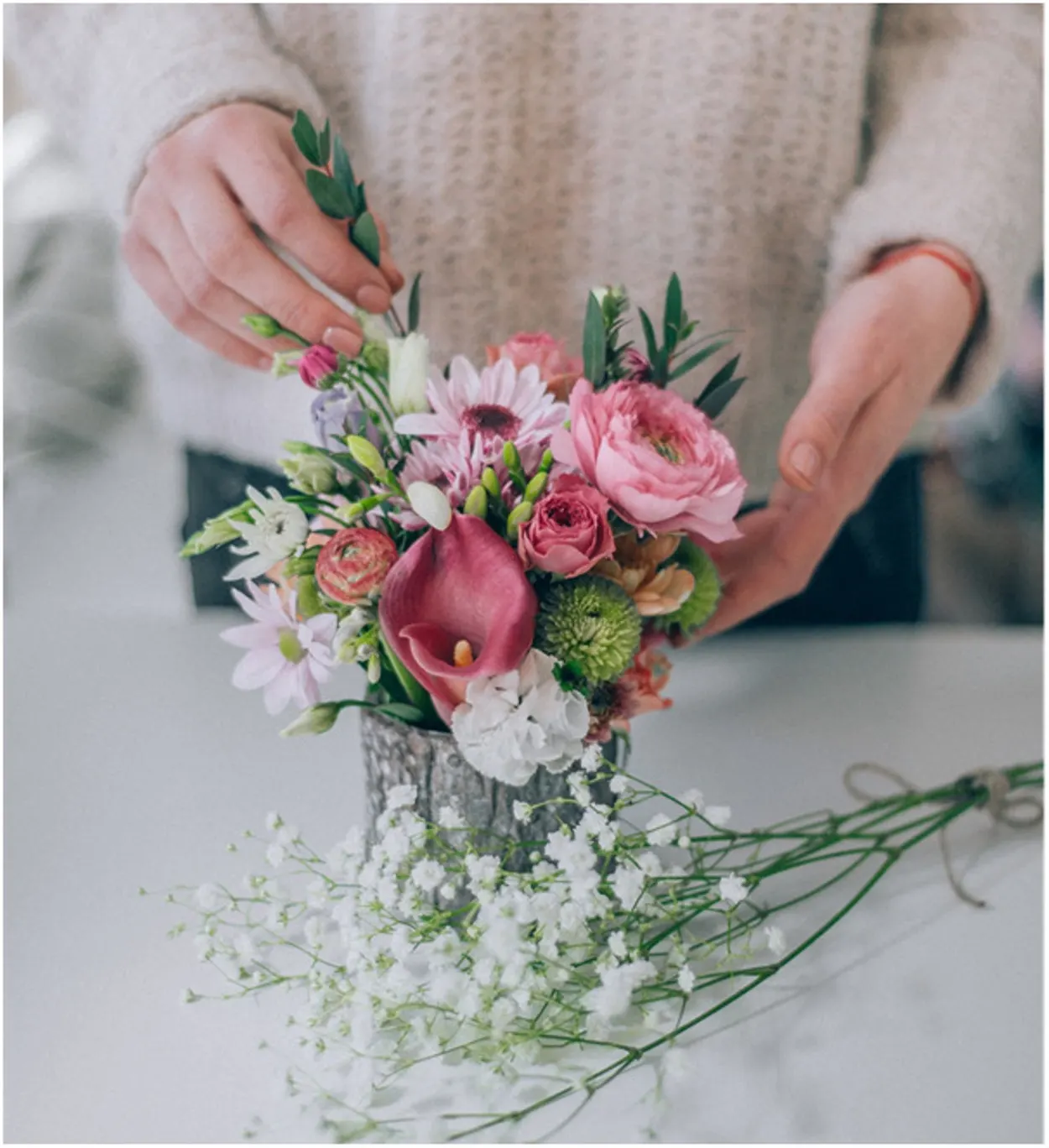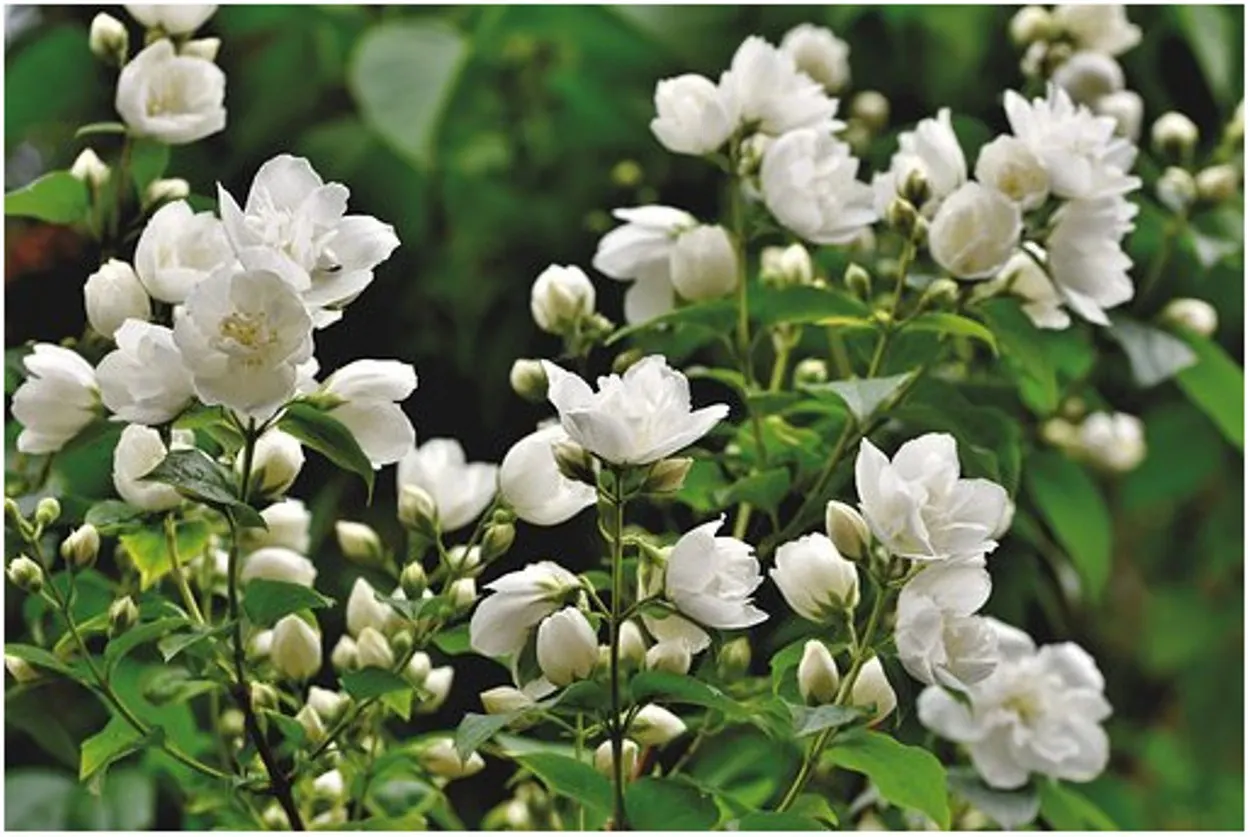Flowers come in many different shapes, designs, sizes, and colors. Flowering plants use their flowers to make seeds that can grow into new plants. They help reproduce plants and feature parts like anthers and stigma that produce pollen and fruits or vegetables after pollination.
When insects visit the flowers to consume their nectar, the pollen grain gets stuck on their body, which will then go from the male stamens to female stigmas. Some of the most important pollinators they attract include bees, wasps, ants, and butterflies.
The bloom pattern is one of the key distinctions between gardenias and jasmines. One flower per branch often blossom on gardenias, and the flowers are waxy, layered, and thick. Jasmine blossoms typically have four to five thin, star-shaped petals and bloom in bundles.
When you look closely, you can see how important flowers are in both nature and our lives. We can see that the world would be a much duller place without flowers.
Learn about the differences between gardenia and jasmine flowers.
Importance Of Flowers
The flowers are impressively versatile and integral to human life and other creatures. They provide warmth in love, sympathy in hard times, comfort in sorrow, and joy during celebrations. Flowers are the most beautiful creations of nature.

They are strongly and deeply interlinked with the positive emotions of caring, love, affection, prosperity, hope, care, peace, happiness, and other positive emotions that we instinctively associate with flowers when we convey our feelings to others. Their purity and attractiveness allow flowers to assume various roles in our lives.
The flower’s delightful smell and vibrant colors encourage and promote happy feelings. Being surrounded by nature is beneficial for psychological health as well.
Flowers have a great impact on our moods. Chrysanthemums, jasmine, calendulas, and lilies are known as relaxation flowers. They are representative of feelings of joy and love.
Flowers are a perfect gift option for any occasion. Flowers can relax and soothe you during stressful times in life.
Flowers are used for decoration in many ways. It is used in weddings, birthdays, churches, decorating temples, etc.
Without flowers, there would be no fruits, grains, and berries, as these are the ripened products of a successfully fertilized flower. Flowers produce nectar and pollen for inset, while some insects eat the flower’s petals and fruits.
Flowers can become an ingredient apart from producing fruits or vegetables. From garnishing to floral tea fusions, many cuisines and drinks use them as their highlights. Edible flowers like hibiscus, lavender, and chamomile have several benefits, as they are high in vitamins, antioxidants, and other nutrients.
Flowers have been a part of traditional Chinese and Ayurveda medicines. From natural laxatives to nutrients that help with water retention or inflammation.
Flowers have multiple commercial applications, from being used as highlights of perfumes to being a centerpiece of decorative items and enhancing commercial or private spaces. We have essential oils, creams, serums, and more products that feature them for body care.
The food industry also uses them to extract flavors and organic food colors or curate creative fusions. Flowers ensure a proper balance of the good and bad in a garden ecosystem and help ensure no infestation of one particular group of insects or bugs.
Importantly, they play an important role in the bees’ production of honey. They are essential to produce honey and promulgating food crops around the world. And they could not do that without flowers.
It is not only the trees that remove excess carbon dioxide from the atmosphere. Flowers play a role here as well. They also remove toxins from the air, helping keep the environment fresh.
Types Of Plants
- Flowering Plants
- Non-Flowering Plants
Flowering Plants
Plants are grown in various shapes and sizes. More than 380,000 different plant species have been identified by scientists.
The plant kingdom includes all living plants on Earth. The kingdom of plants can be divided into flowering and non-flowering plants. It is a very large group of plants and produces flowers.
The seeds of flowering plants are enclosed in fruits or flowers and are called angiosperms. Gardenia and jasmine are examples of flowering plants.
Non-Flowering Plants
Gymnosperms make up some of these plants, and they don’t blossom. These two main categories are used to classify plants that reproduce through spores and plants that reproduce through seeds.
Gardenia Flowers

Scientific Classification
| Scientific name | Gardenia jasminoides |
| Kingdom | Plantae |
| Phylum | Tracheophyte |
| Class | Magnoliopsida |
| Order | Gentian ales |
| Family | Rubiaceous |
| Genus | Gardenia |
| Tribe | Gardenia |
| Number of species | 140 |
Description
A gardenia is a flowering plant of about 142 species belonging to the family of Rubiaceous. Gardenia plants have evergreen shrubs and are indigenous to the tropical and sub-tropical areas of Asia, Africa, and Australia. It can grow from two to twenty feet or more in height in its natural habitat.
The leaves are glossy and dark green, growing from about one to ten inches long, depending on the species. Gardenia flowers are white and yellow and develop either a single or a cluster of blossoms. The flower of many species is known for its intoxicating sweet scent.
Gardenia flowers are known for their elegant and aromatic blooms. The bouquet of these beautiful flowers can easily delight the mood and calm the soul.
Origin Of Gardenia Plant
Gardenia Jasminoides flowers are commonly known as gardenias. These large, beautiful flowers are native to Africa, Asia, Australia, South China, Japan, and Oceania. A Scottish naturalist Alexander Garden first classified it as gardenia because of its sweet smell.
It has grown in China for over one thousand years and was introduced in England in the 18th century. The white flowers are and high fragment. In Japan and China, yellow flowers are used for dying clothes and making food coloring.
Symbol Or Meaning Of Gardenia Plant
The white gardenia flower’s common meaning is purity, trust, peace, hope, tenderness, and protection. Gardenia flowers symbolize everything related to purity and spirituality. These flowers are associated with positive energy during meditation practice.
Gardenia Flowers Are Difficult To Grow
Gardenia is a tough plant to take care of. Many gardenia plants with many buds are often bought, and the buyer excitedly awaits the opening of the flowers. But many times, the buds drop without further development.
When purchasing gardenia plants, it is better to start with small plants without buds. The plants need some time to adjust to the environment in their new home.
Once the plants have adjusted to their new home, flower buds start to develop into beautiful, sweetly scented gardenia flowers.
Gardenia Plant Uses
- This flower is used to make medicines. It is useful for a liver disorder or diabetes and helps to reduce blood sugar.
- It is an antioxidant to reduce swelling and improves the immune system.
- It is used in food for decoration and making food colors.
- The gardenia flower is considered an edible plant. Flower petals are used to make tea and sometimes for pickles.
- A gardenia is also used in skincare products for refreshing and soothing dry or tired skin.
- Its soothing and refreshing smell is also used in perfumes, candles, lotions, and gardenia oil.
- Gardenia essential oil is used for depression and anxiety.
Jasmine

Scientific Classification
| Scientific Name | Jasminum Polyanthum |
| Kingdom | Plantae |
| Order | Lamiales |
| Class | Magnoliopsida |
| Genus | Jasminum |
| Family | Oleaceae |
| Number of species | 200 |
Description
Jasmine is one of the most beautiful, elegant, and gorgeous flowers. They are shrubs or vines usually grown in moderate or warm climates such as those in Europe, Asia, Africa, and Oceania. There are almost 200 species of jasmine in the world.
It is recognized by its characteristics showy flowering bud whose fragrance can easily envelop an entire room or garden. Jasmine flowers are used in decorations. Most species of this plant are grown as climbers.
The leaf shape is evergreen and simple trifoliate with up to nine leaflets. They are mostly white and often have five to six lobes (petals). Jasmine is often strong and sweet-scented.
Origin Of Jasmine Plant
The jasmine flower originates from Asia, China, and East India. This plant needs moderate temperatures and an adequate water supply to grow appropriately.
For thousands of years, it has been native to the foothills of the western Himalayan and Indus Valley plains of Pakistan.
Symbol Or Meaning
The jasmine flower represents love and purity. Because of its elegant texture and aromatic fragrance, it is popular among people.
According to the ancient Egyptians, the jasmine flower means love, beauty, and sensuality. It is available in red, white, pink, and various colors. Every color of jasmine has its unique meaning.
Some Benefits Of Jasmine Flowers
This flower is an antioxidant and has amazing health benefits:
- Jasmine flowers are used in medicines. Also used in liver diseases (hepatitis) and abdominal pain (diarrhea)or to prevent strokes.
- It is also used for cancer treatment.
- Drinking jasmine tea may lower the risk of heart disease and boost brain function.
- It also helps to reduce weight and depression.
- Jasmine is used in skin products. It increases skin elasticity, reduces dryness, and gives moisture to the skin.
- Jasmine tea is very popular among people.
Difference Between Gardenia And Jasmine Flowers
| Characteristics | Gardenia Flower | Jasmine Flower |
| Flowering season | It blooms in the spring season till early winter. | They bloom from winter till spring season. |
| The scent | It has a strong, calming, and more lady-like fragrance. | Jasmine has a calming, tropical, and undertone smell. |
| Flowers | Gardenia plants are longer the jasmine, and their flower has three to four petals and a central column. | The jasmine flowers have five petals, and the stamen is longer or thinner. |
| Leaves | Gardenia leaves are longer, more vibrant, thick, and can grow around 12cm long. | Jasmine’s leave is narrow and darker green. It can grow around 3 to 8 cm. |
| Stem and branches | It has a lighter grey stem, and they are sturdy shrubs that produce toxic milky sap. | It has a darker stem. And its vine climbs. |
Conclusion
- Gardenia and jasmine don’t bloom at the same time. Gardenia has one flower, but jasmine has three to four flowers in one bunch.
- Both flowers have an elegant scent but are distinct from each other. Jasmine has a calming smell, but on the other hand, gardenia has an intense fragrance.
- There most distinct area of both plants is their leaves. Jasmine leaves are small, darker green, and narrower. Gardenia leaves are longer, vibrant green, glossy, and thick.
- They both have different stems and branches. Jasmine has dark brown vine climbs, and gardenia has lighter grey shrubs.

